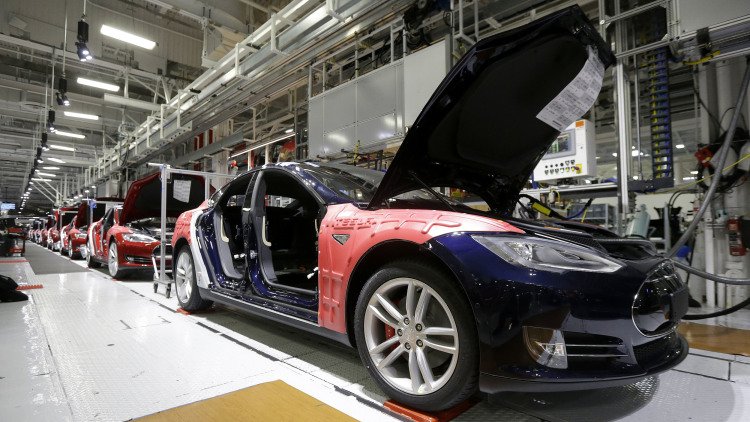Tesla Needs Billions To Meet Musk's Assembly Timeline

When CEO Elon Musk pulled ahead the electric-car company’s target to increase vehicle assembly to 500,000 a year to 2018 from 2020, he added that capital spending will increase by about 50 percent -- $750 million -- from the original budget for this year, which would probably require some fundraising.
The smallest and youngest publicly held U.S. automaker faces huge capital expenditures as it ramps up its massive battery factory toward full production, adds tooling for a third model, expands sales and service operations globally, installs more superchargers, seeks to hire additional manufacturing experts and contemplates adding more vehicle-assembly capacity.
Analyst Brian Johnson of Barclays projected a $3 billion equity raise sometime in the second quarter. At current stock prices, a transaction of that size would be about 14.5 million shares, an increase of 11 percent to the number of shares outstanding.
'Startup unicorn'
“With its ambitious plans that will require an incremental fundraising, we view Tesla as more of a cash-hungry startup unicorn than a traditional public company,” wrote Johnson in a research note. “With Tesla likely to come to the market for a capital raise near-term, it’s worth asking whether it deserves an up round or a down round.”
This would be Tesla’s sixth capital raise in the last four years, following a lull after its June 2010 initial public offering, when it raised $226 million in the first IPO for a U.S. automaker in a half century. The other five:
• October 2012 -- Tesla raised $222 million selling shares for $28.25 apiece.
• May 2013 -- the company raised $1.08 billion in equity and debt offerings, a move that allowed it to repay its $465 million Energy Department loan nine years ahead of schedule.
• February 2014 -- Tesla borrowed $2.3 billion more in convertible debt to help finance the gigafactory under construction east of Reno, Nevada.
• June 2015 -- Tesla obtained a credit line of as much as $750 million.
• August 2015 -- Tesla sold 3.1 million shares, raising $738 million.
Musk has often invested in the new offerings, and he remains by far the largest shareholder with a 22 percent stake.
With the first-quarter earnings release last week, Tesla said it had $1.44 billion in cash and cash equivalents as of March 31, up from $1.19 billion three months earlier. Long-term debt rose to $3.12 billion from $2.65 billion at year-end. The company drew from its line of credit and paid most of it back. Most of the cash generated via orders placed for the Model 3 came in after the quarter had closed -- and really isn’t ideal for capital investments, Musk said.
“I don’t think we want to rely too much on customer reservation money as a source of capital,” he said during the first-quarter earnings call with analysts. “Maybe there is a buffer or something, but it’s not as a primary source of capital. I think it’s going to make sense for us to raise some amount of money -- some combination of equity and debt -- and make sure the company has a good buffer of cash on hand. I think it’s important for de-risking the company.”
Liquidity crisis
Tesla has stared down the barrel of a liquidity crisis before, prompting Musk’s arrival at the company and again when trying to launch its Roadster during the great recession. So reducing the possibility of another one should manufacturing delays -- at either its battery gigafactory or the assembly plant -- slow the flow of revenue is a prudent response to a very real danger.
The company started the year anticipating $1.5 billion of capital expenditures and now projects spending more like $2.25 billion to take it from niche player to high volume manufacturer.
“The significant acceleration of capacity and assembly plans of course necessitates a large increase in capital spending, providing perfect rationale for a large equity capital raise which might have otherwise been needed or at any rate desired, due to ongoing free cash burn and liquidity-comfort levels,” wrote Ryan Brinkman of JPMorgan Chase & Co.
Related News
